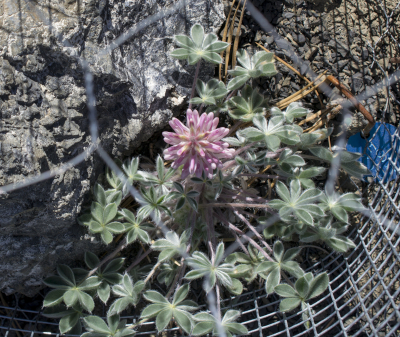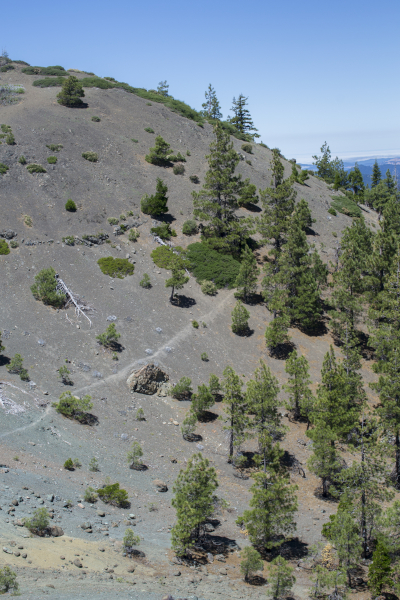(Lupinus constancei)
 Lupinus constancei. CDFW Photo by Jeb Bjerke.
Lupinus constancei. CDFW Photo by Jeb Bjerke.
 Lupinus constancei habitat. CDFW Photo by Jeb Bjerke.
Lupinus constancei habitat. CDFW Photo by Jeb Bjerke.
Lassics lupine (Lupinus constancei) is a California endangered plant species, which means that killing or possessing this plant is prohibited by the California Endangered Species Act (CESA). This species is also a candidate for listing under the federal Endangered Species Act. Lassics lupine is a low growing perennial plant of the legume family (Fabaceae) with rose and pink flowers that typically bloom in July, but may bloom as early as late May. Lassics lupine is only found near the summits of remote mountains in northern California called the Lassics, which have unique serpentine-influenced soils. The Lassics are located in Humboldt and Trinity Counties within the Six Rivers National Forest. There are two known populations of Lassics lupine occupying a combined area of approximately 1.6 hectares (4 acres). The smaller of the two Lassics lupine populations is found on a southwest-facing slope of a mountain called Red Lassic. The larger Lassics lupine population is located entirely within Mt. Lassic Wilderness on adjoining peaks of Mt. Lassic. Results of extensive surveys of the Lassics suggest that Lassics lupine has always been restricted to small areas of suitable habitat.
The most immediate threat to the existence of Lassics lupine is from predation of Lassics lupine seeds prior to dispersal (while still attached to the plant) by small mammals such as deer mice and chipmunks. In response to the observed seed predation, researchers and the U.S. Forest Service began using wire cages to exclude seed predators from reproductive Lassics lupine plants in 2003, and this practice is still in use. Lassics lupine is also sensitive to climate extremes such as high summer temperatures, low summer precipitation, and early snowmelt. As a result of climate change, the Lassics are expected to experience less snowpack and higher summer temperatures. Climate change is considered a significant ongoing threat to the continued existence of the species. Lassics lupine also faces significant threats from vegetation encroachment and related fire suppression, small population sizes, the aftermath of the 2015 Lassics Fire, consumption of vegetation and flowers by animals (herbivory), and relatively minor threats from illegal off-road vehicle use and trampling from recreational use. Because of the rarity of Lassics lupine, the loss of all or a significant portion of either Lassics lupine population would represent the loss of a significant portion of Lassics lupine’s total range.
The California Department of Fish and Wildlife completed a Status Review of Lassics Lupine (PDF) in 2018, which provides detailed information on the biology and population trends of Lassics lupine, and an analysis of the factors affecting the ability of the species to survive and reproduce. The continued existence of Lassics lupine likely depends, in part, on the ability of the U.S. Forest Service to continue caging reproductive plants and managing habitat at the Lassics so it remains suitable for the species.
CDFW may issue permits for Lassics lupine pursuant to CESA, and you can learn more about the California laws protecting Lassics lupine and other California native plants. Populations of Lassics lupine occur in CDFW's Northern Region, and within the Six Rivers National Forest.
Updated 10/17/2018